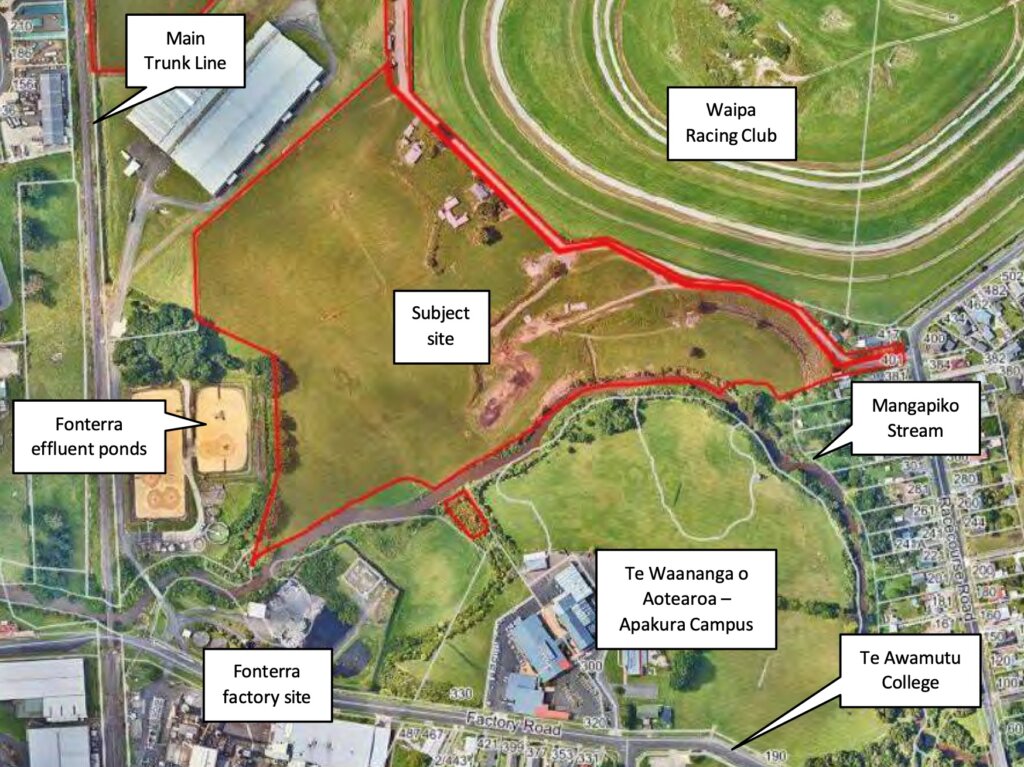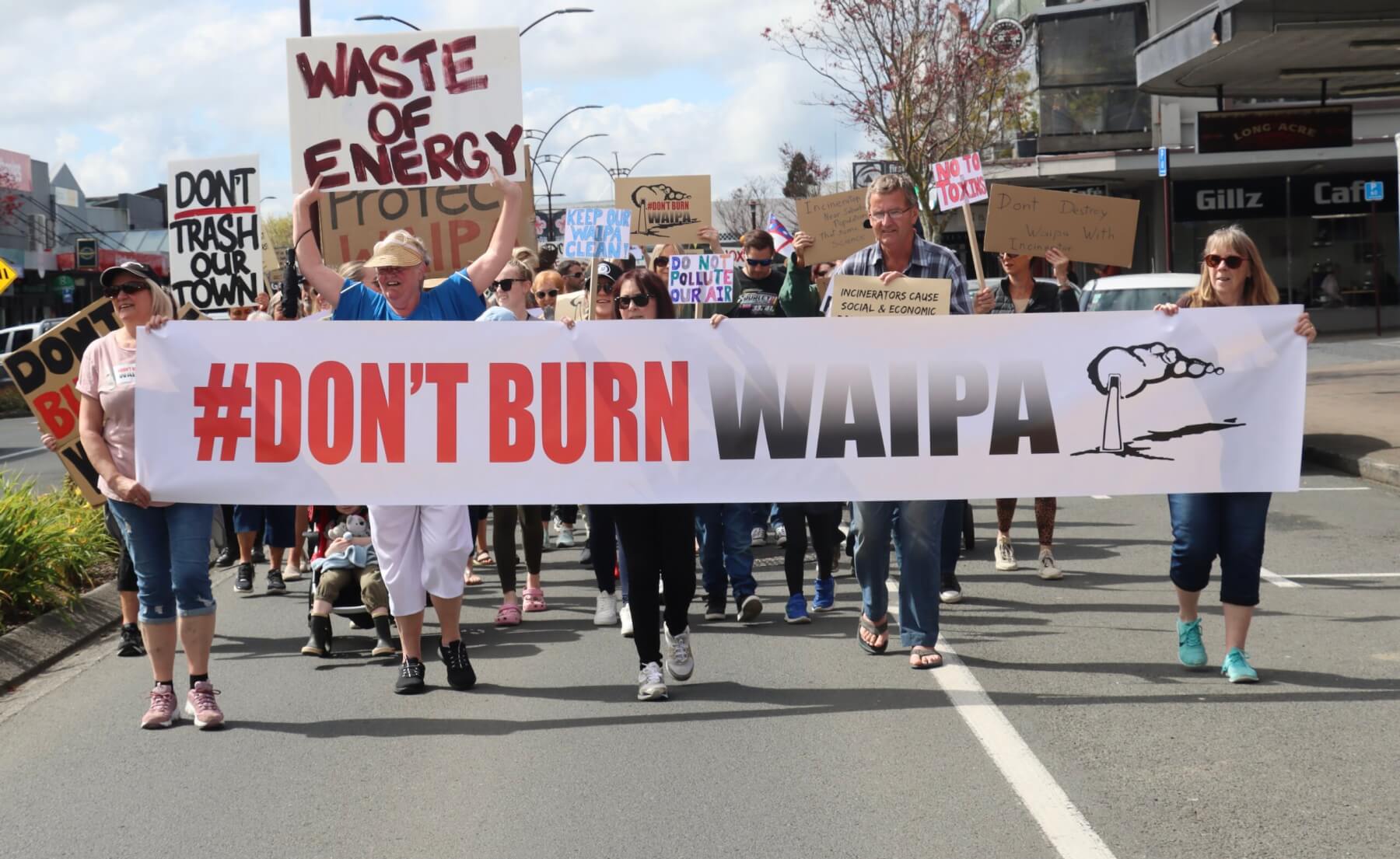Andrew Johnstone put his views forward last week in support of an incinerator plant for Waipā. Today, Nick Cantlon, representing the Don’t Burn Waipā lobby group, responds.
Marching down Alexandra Street, Te Awamutu.
Don’t Burn Waipā is a group of local residents opposed to the waste-to-energy incinerator (‘Paewira’) proposed for Te Awamutu.

Nick Cantlon
The group is focused on informing and educating the community about the impact the plant will likely have on our health, environment and economy. We strongly believe that the incinerator will bring zero benefits to the community and have a negative impact on the surrounding farmland. We will oppose the application every step of the way through the resource consent process.
While there are many waste incinerators throughout the world – mainly in densely populated countries in the northern hemisphere – we believe the New Zealand environment is quite different, and there are better ways for us to manage our waste than burning it. It certainly does not fit with New Zealand’s long term plan to move towards a “circular economy”.
The Waikato Regional Council commissioned a report from international consultant Eunomia on the implications of Waste-to-Energy plants for New Zealand.
The report recommends that food waste and organic material should always be recovered from waste and composted.

A digital mock-up of Paewira Recycle Plant – supplied
Treatment of the remaining non-recyclable waste by incineration or landfill was then compared. If the waste has a high plastic and tyre content – such as at the proposed Paewira plant – incineration releases five times more carbon dioxide into the atmosphere than landfill where the carbon remains locked in the plastic.
The report concludes that “Landfill (with optimised gas capture and energy generation, to limit methane emission impacts) be used as the only waste management approach for genuinely residual mixed waste.”
As well as this fundamental flaw, the specific proposal for Te Awamutu contains several other major negatives:
The Site: The proposed site is designated in the District Plan as Industrial with a Specialised Dairy Industrial Policy Overlay to protect the nearby Fonterra complex from non-aligned uses. Global Contracting Solutions (GCS) believes that the incinerator will have no significant effect on the Fonterra plant. Fonterra disagrees.
Their submission to Waipā District Council and Waikato Regional Council asks for the application to be declined, citing the potential negative effects on food safety, staff safety, risk of contamination and impact on Fonterra’s food safety certification and international reputation.
The site is also close to homes, day care and schools.
Traffic Impact: The plant is intended to process 456 tonnes of waste every day. This will all be trucked in from beyond Waipa. Other processing materials need to be transported onto the site and ash and contaminated water removed. GCS estimates that 50 trucks and 130 light vehicles will visit the site every day. Double these numbers for entering and leaving the site and this is a tripling of trucks and 20 per cent increase in light vehicles using Racecourse Rd.
Air Emissions: GCS states that the plant will have pollution control equipment to remove most of the nasties from the incinerator smoke so that the remaining toxins will have a negligible effect.

A digital illustration of Te Awamutu’s proposed waste to energy plant.
This assessment relies on a number of assumptions that may not be achieved in practice. In particular, the fuel mix will vary considerably and the temperature of the furnace is also liable to vary from the minimum 850 degrees Celsius required for complete combustion. Both these variables will have a multiplier effect on the level of toxins released. It is difficult to maintain a constant temperature and injections of diesel may be required to stabilise the furnace. Start-up and shut-down periods emit far more toxins than during the ideal operating conditions when monitoring is done.
The toxins that are emitted don’t simply vanish. Some will settle on the nearby roofs of homes, and on gardens and school and childcare play areas. Some will settle onto farmland and be consumed by the animals whose meat and milk we will then consume. Even if initial air concentrations are within “safe” levels, the toxins will accumulate over time. The effects of this are unknown but we do know that free-range chicken eggs from areas adjacent to waste incinerators in Europe have been found to contain high levels of dioxins.
Ash and Wastewater: GCS has assumed that 23 tonnes (or 5 per cent) of ash will be produced every day. Our research suggests it will be much more than this. This ash has to be trucked away and disposed of as toxic waste to an unspecified landfill. Similarly, 160,000 litres of contaminated water has to be trucked away every day to an undisclosed site where it can be treated.
Other factors: Other areas of concern are public opposition; visual impact of the plant buildings (35m high); human health impacts; impact on Mangapiko Stream; effect on property values; climate change effects; use of steam for electricity affects furnace efficiency and uncertainty of waste supply.
See: Examining the burning issue

An aerial view of Paewira’s proposed ‘footprint’ in Racecourse Rd. Photo: Supplied.










